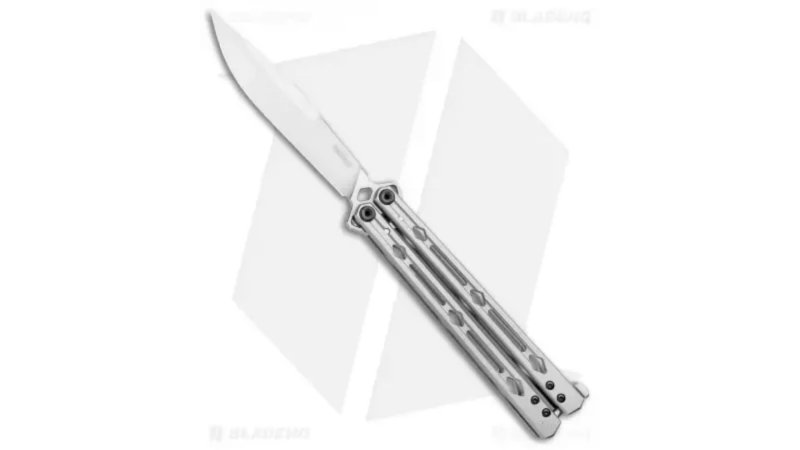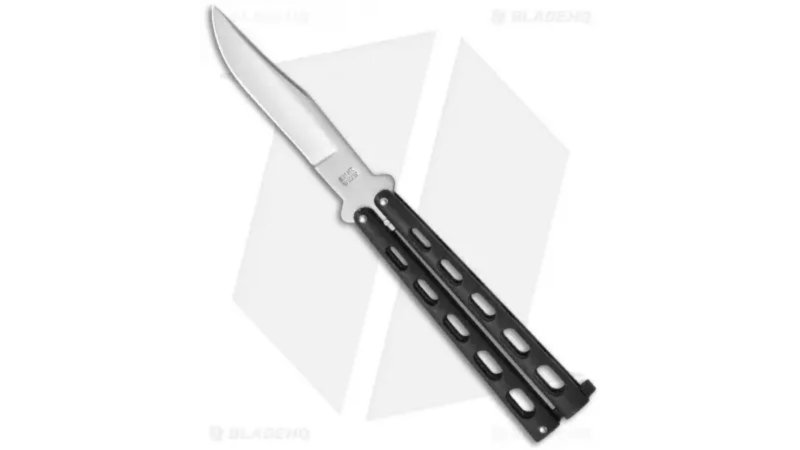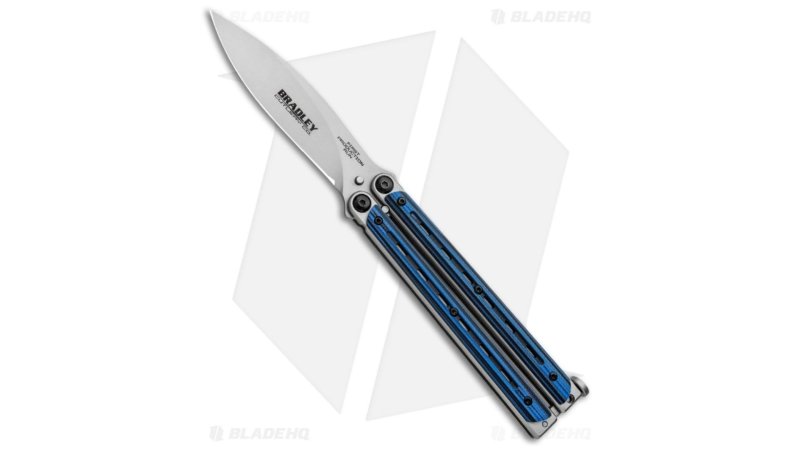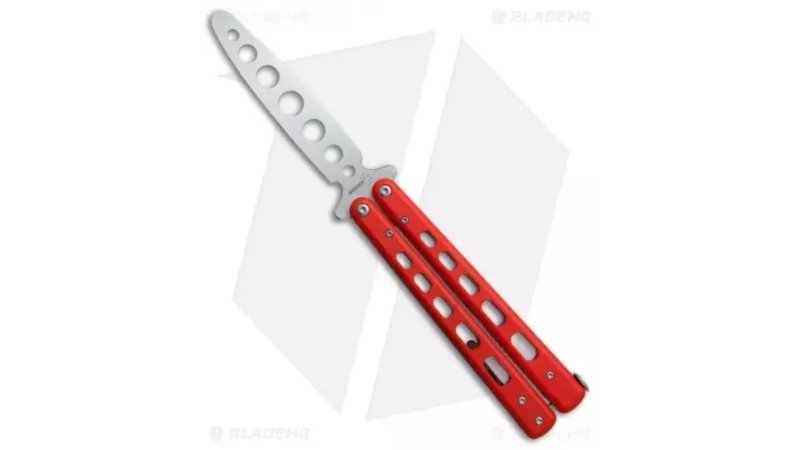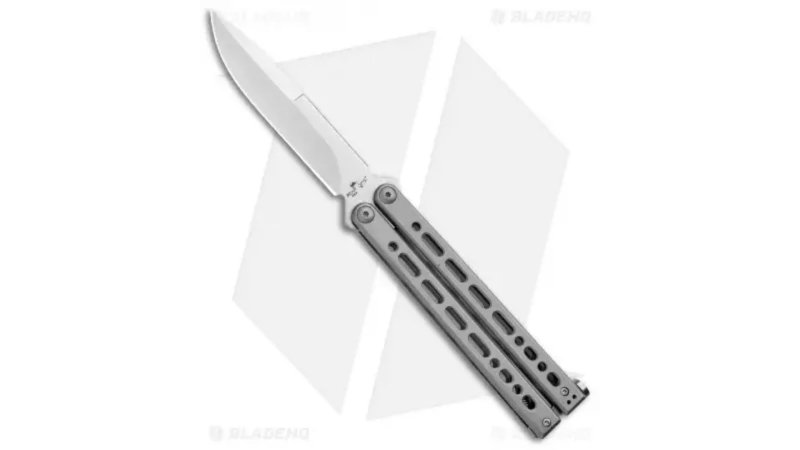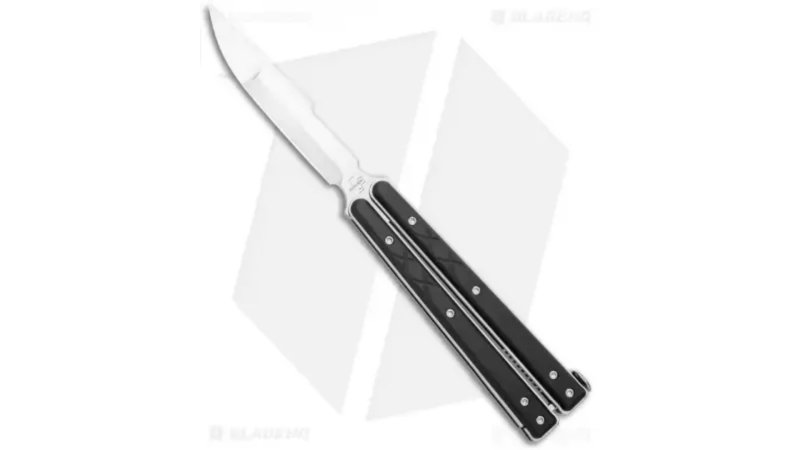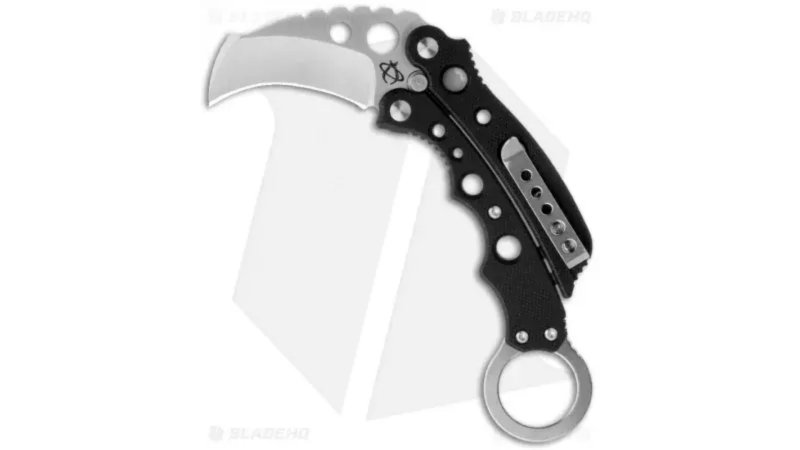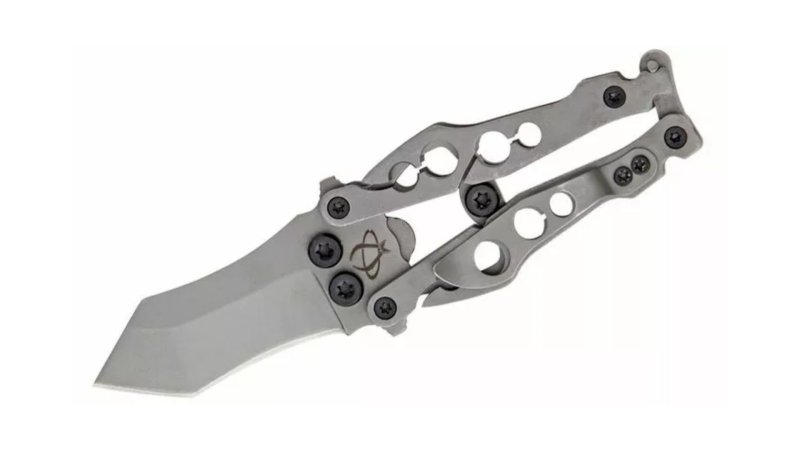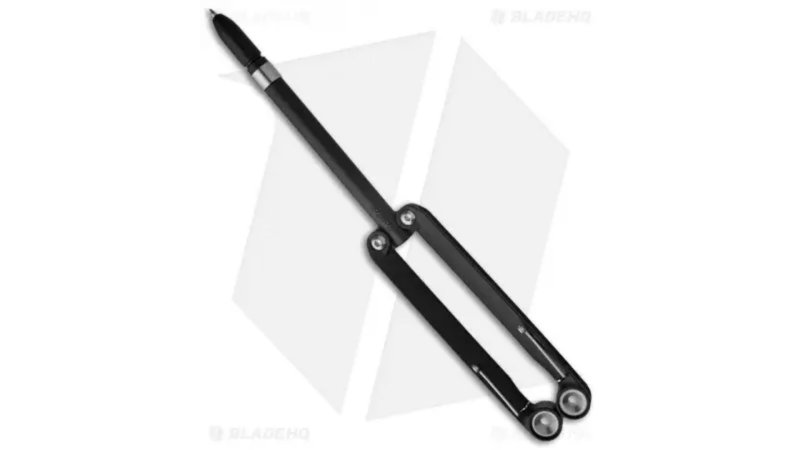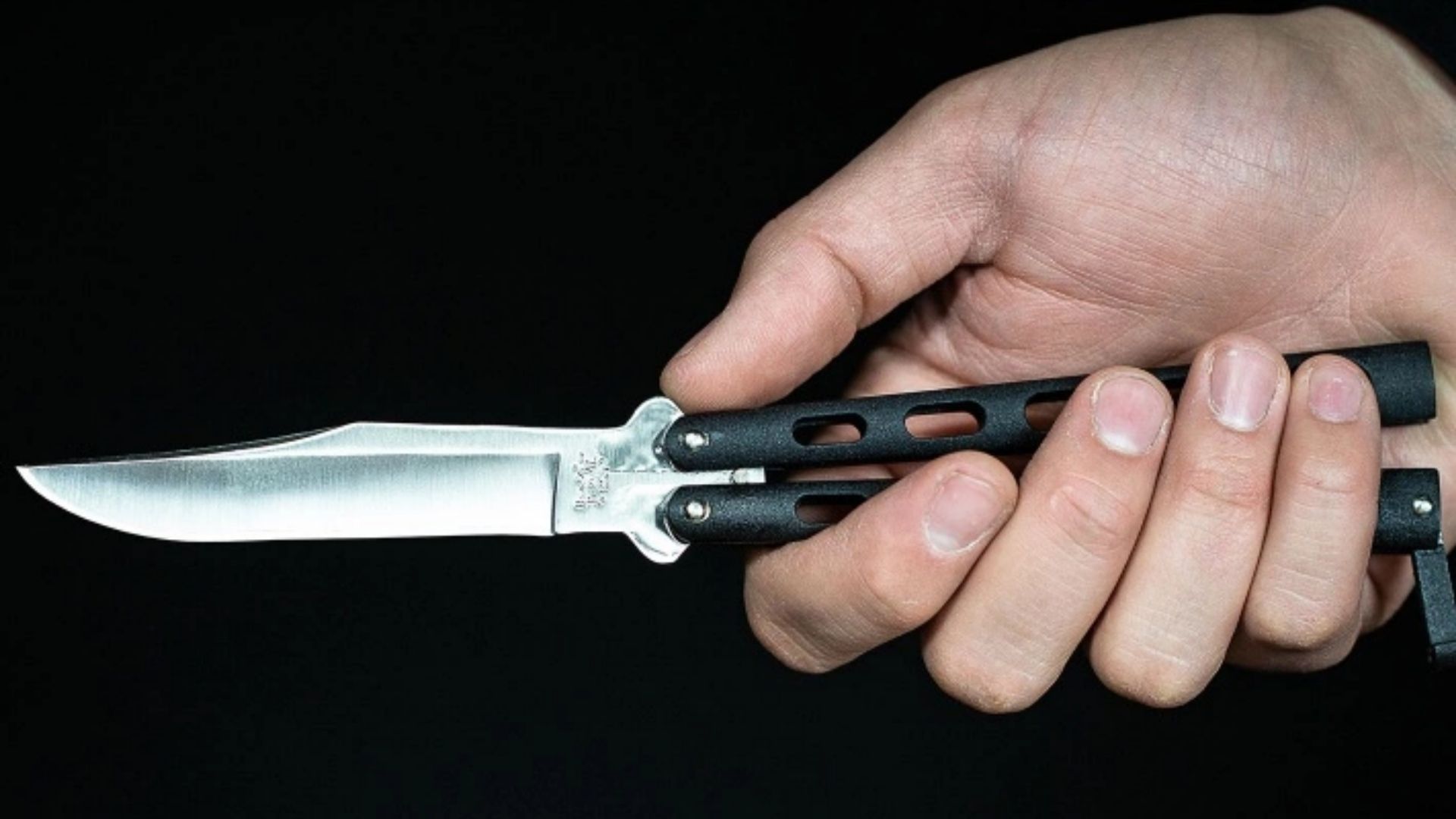

We may earn revenue from the products available on this page and participate in affiliate programs.
From Philippine urbanites to movie vigilantes and TV show goons, nothing seems cooler than a butterfly knife. Known as a balisong or Batangas knife in its country of origin, these have been the two-in-one self-defense tool/grown-up fidget spinner for roughly 1,200 years. They’re sleek showpieces, razor-sharp deterrents, and masterfully elegant tools when placed in equally-masterful hands.
Fancying yourself a butterfly knife of your own? Not sure which one is the right blade for you? I get it. There’s an overwhelming catalog out there with more choices than even I knew about when I purchased mine, but no worries. Task & Purpose is here to guide you through a market loaded with options and help you decide what is the best butterfly knife for you with added tips and know-how along the way.
Best Overall
Kershaw Lucha
Pros
- Strong value among higher-end knives
- Durable blade material
- Praiseworthy speed and smoothness
- Lengthy, frighteningly sharp blade
Cons
- Price may still seem steep to some
- Flippers may find it too heavy
Product Specs
Best Value
Bear u0026 Son 114B
Pros
- Highly appealing price point
- Clean, simple design
- Durable construction
- Flips well for the money
Cons
- A teeny bit flimsy
- Free-hanging latch can hinder flips
- Not for those seeking more interesting designs
Product Specs
Editor’s Choice
Bradley Kimura
Pros
- Well-rounded performance
- Compact size for concealment and rapid flipping
- Unique, interchangeable grip finishes
- Reversible latch
Cons
- Somewhat shaky build quality
- Flippers may find it too heavy
Product Specs
Best Butterfly Knife Trainers
Boker Plus Balisong Trainer
Pros
- Affordable price point
- Noteworthy resiliency
- Built-in pocket clip
- Smooth operation
Cons
- Some have reported mild blade rub
- Some sharp edges may require sanding
Product Specs
Best EDC Butterfly Knife
Bear Ops Bear Song VIII
Pros
- Spring-loaded latch
- Built-in pocket clip
- Lengthy blade
- Quality rivals more expensive knives
Cons
- Flippers may find it too bulky for tricks
Product Specs
Best Butterfly Knife Under $100
Boker Plus Balisong Tactical Small
Pros
- Compact size aids flipping and concealment
- Spring-loaded latch
- Slots right below $100 mark
- Handsome, texturized handles
Cons
- May require added lubrication out of box
Product Specs
Best Butterfly Karambit
Mantis Vuja De MK-4
Pros
- Dual functionality as a karambit
- Compact overall size
- Built-in pocket clip
- Great build quality
Cons
- Bulky shape when concealed
- Awkward actuation
- Miniscule blade length
Product Specs
Best Novelty Butterfly Knife
Mantis BK-3b Bottleneck
Pros
- Awesome novelty gift
- Built-in bottle opener
- Built-in pocket clip
- Can be attached to keyrings
Cons
- Bulky shape when concealed
- Shortest blade on this list
- Questionable build quality
Product Specs
Best Butterfly Not-Even-A-Tool
Spyderco BaliYo
Pros
- The cheapest thing on this list
- Built-in pocket clip
- Uh, you can write with it
Cons
- Well, you definitely can’t cut with it
Product Specs
Why you should trust us
Task & Purpose is devoted to providing the best consumer information on any product we review. We’re staffed by a variety of veterans, active-duty service members, and just fun-loving outdoorsmen who care about quality and honesty just as much as the reader. Many of us have seen a million of these products, and we’ve used a million of them. The writers at T&P know their way around a blade, and I myself have owned a handful including a Bear & Son balisong, meaning we can back days of meticulous research with real-world, hands-on experience.
Types of butterfly knives
As you scour the catalogs of knife vendors searching for your ideal butterfly knife, you may begin to realize that they’re not necessarily segregated into any specific category. A lot of them seem to do almost the exact same thing with much of the differences being more subjective rather than objective. In short, you probably won’t see butterfly knives in the loadouts of soldiers or wildlife rangers. Even so, there are some knives, however, that are able to take care of certain jobs just a little bit better than others. Here are a few disciplines through which a balisong can distinguish itself.
EDC
Balisongs favoring EDC duty may stand out with big, utilitarian blades or an overall compact design that’s friendly on the pocket. Nearly all of them would have built-in pocket clips for ease of transport. Those with spring-loaded latches are easier to deploy and safer to secure on a regular basis until needed. Such knives will often feature the most robust, corrosion-resistant, and dependable build quality to ensure a long life.
Self-defense
These won’t always be the most featureful knives that can rip through the wind like Sonic the Hedgehog, but they’ll certainly be sharp enough to tear like Wolverine. Knives that best suit this category will often be the sharpest of flippers, typically larger spear points or bayonet-types, constructed with durable blade materials that can take a beating. Nicer examples may also feature spring-loaded latches for easier, quicker deployment in tense situations as well as pocket clips to aid in EDC duty.
Trainers
As per the name, trainers are literally intended to train enthusiasts how to properly deploy and flip their butterfly knives with minimal risk of injury. They’ll be constructed under the same standards and build quality as the real thing and often using the same materials. Some high-end trainers may even use ball bearing pivots just like more premium butterfly knives. All trainers will feature the same common trait: a dull, rounded-off edge all the way around the blade eliminating the risk of cutting one’s self.
Novelty
Remember the bottle opener and the pen? Yeah, that’s as novelty as novelty gets. But there are plenty of novelty butterfly knives out there as the blade has become equally romanticized and demonized in modern times. Since they don’t technically function as a real knife, some may consider trainers to be novelties for playing around with. Cheap, decorative knives with a priority on form over function may also fall under this category, knives constructed of cheap steel and wrapped in fancy pearlescent colors and such. You wouldn’t use them to carve wood. You probably wouldn’t think to use one for opening mail. But they definitely look pretty up on a shelf.
Key features of butterfly knives
Blade steel
Like any other knife, blade material matters. The quality of material used, particularly the content of carbon in the steel, determines the resistance to scratching or dulling. Lower carbon steel, like 440 used in more affordable blades, will generally be softer and easier to dull but are more corrosion-resistant. Steels in more expensive knives such as D2, 154CM, or Sandvik 14C28n (also found in chef’s knives) will be far more resilient and stay sharp longer.
Blade shape
Most butterfly knives sport the same bayonet or clip point-styles of blade shapes, but the immense variety means there are more unique breeds to be found. Tantos, spear points, and karambit variations are less common, but they are certainly available. Trainers are typically rounded and dull with an edge that roughly mimics the spine of the blade all the way around, thus eliminating the chance of injury when practicing flips.
Pivot pins
As per the name, these are literally the pins on which the handles pivot on giving the butterfly knife its famous actuation. The quality of these pins have a great effect on the smoothness and speed of the movement of the handles. Pricier, higher-tier butterfly knives will enhance their pivot pins with ball bearings not unlike wheel casters or fidget spinners to give users a truly silky-smooth and rapid movement. More often than not, these parts will be lubricated with knife oil, so long-time owners must take proper care of their pivot pins as their blades age.
Handles
The handles split apart to deploy or conceal the blade. When concealed, the blade rests inside the hollow groove and is held shut by a latch that’s either free-hanging or spring-loaded for added security. When deployed, the handles clamp onto the blade’s tang pin to keep it sturdy and upright. Some handles may have a solid grip, but most are skeletonized with some having purposefully-cut grooves to aid in hand positioning during tricks. Note that there is a specific “safe handle” which faces the spine of the blade as well as a “bite handle” which faces the sharpened edge of the blade. Exercise caution with where your fingers are on the bite handle, as that’s where you’re more likely to cut yourself in an accident.
Benefits of butterfly knives
Rapid deployment/concealment
In the hands of a trained, well-versed owner, a butterfly knife can deploy and conceal nearly if not just as quickly as a switchblade. Cheap pocket knives may get stuck or be stiff in their deployment. Butterfly knives can quickly and reliably deploy single handedly with trusted consistency, a plus during a stressful self-defense environment. Spring-loaded latches may further ease the deployment process making one-handed draws a breeze. Like any skill, it just takes a tad bit of practice.
Plenty of variety
As you can tell by now, butterfly knives can be crafted in a multitude of variants from tanto blades to bayonet-style blades and even karambits. Some come with customizable and removable handle grips to suit your tastes. Pick your blade style and finish, but that seems easier said than done, huh? So much variety. Too many choices.
You’ll look fly as hell and have a ton of fun doing so
Uh, it looks freaking cool? Duh. But seriously, aside from being an exotic party piece to flex on your friends with, butterfly knives can be a fun, engaging passtime to take up whether you’re solo or with your pals. As mentioned, it does take skill, especially if you’re in it for the tricks, but the majority of the fun is learning how to tame the blade. Like firearms or musical instruments, it’s just a good deal of fun.
Butterfly knives pricing
Under $70
Butterfly knives under $70 are mostly entry-level choices for beginners. You’re getting a basic starter knife (or trainer) that’s effective at flipping and cutting, but not much more. No fancy materials, super hard steel, or unique grip designs, but they can still get the job done in the right hands. Don’t expect the most astounding build quality in this range, but you won’t be buying crap either.
$70 to $150
Build quality and materials take quite a leap in this price range and keep climbing the farther up you go. Tolerances get tighter allowing for more precise action of the knife. Customization options become more commonplace, and stronger blade materials appear. Designs become more intricate as manufacturers attempt to better distinguish themselves in this range. A few knives on the higher end of this scale may start to include ball bearing pivots for enhanced speed and smoothness.
$150 to $300
Now we’re entering a wonderfully diverse territory occupied by the most acclaimed manufacturers utilizing the truly premium materials. Whether they’re worth it depends on your use case and the exact model. Expect exotic, highly-resilient blade materials and ball bearing pivots as the norm.
Over $300
These are for the truly devoted enthusiasts with expensive tastes and an appreciation for ultra-fine details. Knives in this realm can easily skyrocket to nearly a grand and feature even more exotic materials like finished wood, bronze, and titanium. Bushings may also be implemented to dampen vibrations and blades may be polished to a near mirror-like finish.
How we chose our top picks
Our tedious, in-depth research combined with real experience and knowledge serves to spare you hours in front of a screen. Video demonstrations, expert opinions and, most importantly, customer feedback help us decide on what butterfly knives are appropriate picks for this list. Websites such as Blade HQ and Knife Center are loaded with knives to choose from, accompanied by expert input and an encyclopedia of consumer reviews.
The best knives were typically multi-talented, purposeful blades that can not only sit pretty but dance, fight, and work with as much balance as possible. They represented strong value in their categories and were backed by armies of consumers who trust in their products. Only the best flippers, precise cutters, and most durable workhorses were considered for each category, with priorities shifting as categories got specific such as being the better EDC or trainers.
Additionally, it must be noted that there were plenty of acclaimed, top-notch knives that didn’t make the cut (sorry) at the time of writing due to a lack of availability. Famous and popular models from companies like Benchmade, Squid Industries, or Bladerunner Systems (BRS) would appear all over different websites but would either be extremely limited, sold out, discontinued, or simply listed as “unavailable.” We wanted to feature blades you can order the second this article dropped. What good are raving reviews when you can’t buy the dang things? Blades with little-to-no consumer feedback or professional testing were also ignored as we heavily emphasize products with trusted, real-world backing.
FAQs on butterfly knives
You’ve got questions, Task & Purpose has answers.
Q: Are butterfly knives illegal?
A: Kinda-sorta, not really. It’s not an easy yes-or-no question, as it’s dependent on your region. Typically, they may be mildly restricted for similar reasons as switchblades, but a handful of states and countries are known to be incredibly strict. Check your local laws regarding butterfly knives. Details on legality in different states can be found here.
Q: What is a good size for a butterfly knife?
A: It depends on your use case. Most butterfly knives tend to range between three to over 4.5 inches. Larger knives (four inches and up) can be legitimately effective tools for defense or serious cutting. Smaller blades tend to be easier to conceal and have better weight balance for easier, faster flipping during tricks. This is highly subjective, however, as some prefer the momentum afforded by heavier knives to help move the blade.
Q: How old do you have to be to get a trainer butterfly knife?
A: As they’re not real knives with a sharpened edge, you can purchase a trainer butterfly knife at pretty much any age in most places. Some owners of trainers on the internet are noted to be as young as 12 years old, with parents in forums expressing interest in trainers for children even younger. Additionally, the lack of a sharp edge means trainers may be owned in places where the real deal may not be.
Our gear section
Jeric Jaleco is an AGE mechanic (2A6X2) in the Nevada Air National Guard as well as a contributor to The Drive and Car Bibles. Born in SoCal and raised in Las Vegas, he’s a diehard car enthusiast and aspiring purveyor of firearms. He’s journeyed far from his first deployment in East Africa to pursue a career in writing.
